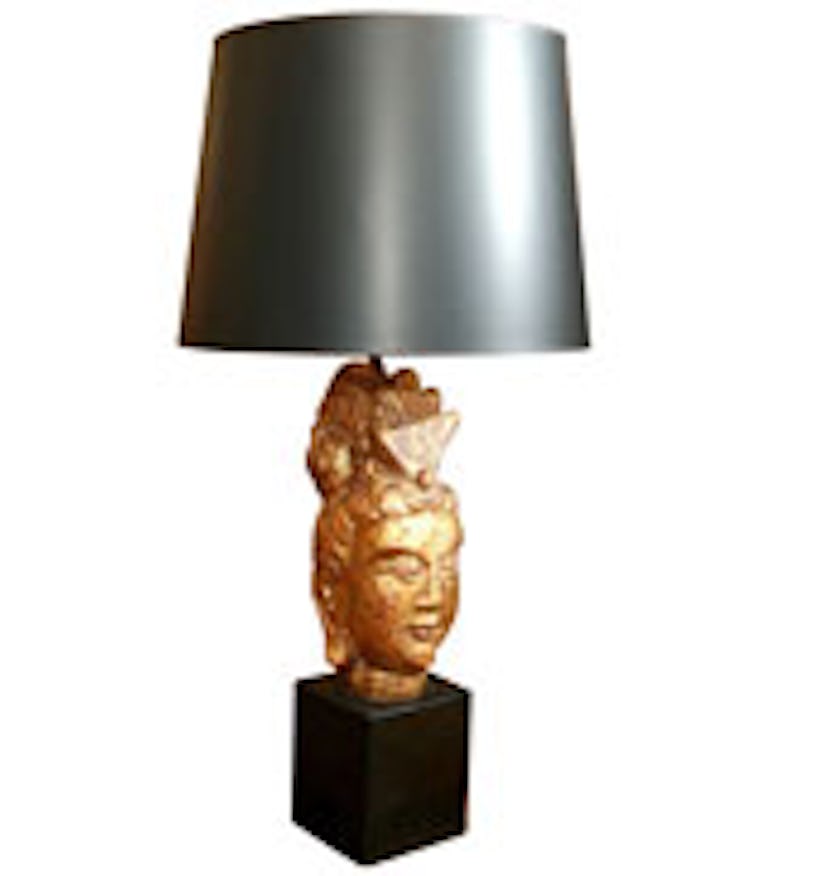The business of design is a fickle one—over the course of time, some names become iconic while others fade into obscurity. An A-list of contemporary designers give a shout-out to their favorite people and pieces from the past.
1
Though certain pieces from Finnish designer Eero AArnio (b. 1932) are ubiquitous—most notably, the space-age Bubble Chair swing—few would know his name or much of the rest of his catalog, which often looks as if it were discarded from the set of the British sci-fi series Space: 1999. “His work is both fun and expressive,” says designer Tord Boontje, who has a particular fondness for Aarnio’s childlike, albeit adult-size, molded-foam Pony seat. “He’s a master of plastic, and created some of the loveliest objects of the 20th century.”
2
Eileen Gray (1878–1976), an outlandish Irish-born aristocrat who ricocheted from male to female lovers, was proud to be a Parisian demimondaine between the wars. She also designed many recognizable pieces—among them the Michelin Man–inspired Bibendum chair—with which her name is rarely associated. But it’s her Transat armchair from 1927 that wows Paul Silvera, owner of Silvera in Paris. “To create it she had to entirely rethink the ergonomics of this type of chair,” Silvera says, “because this was the absolute opposite of that period’s rigorous geometry.”
3
American interiors guru James Mont (1904–74) was best known for his Hollywood–meets–Hong Kong glamour—as well as for producing handy collapsible Prohibition-era bars for a mafia-heavy clientele. “His often theatrical work continually flirted with going over the top yet somehow managed to pull back from the edge right at the last minute,” says designer and retailer Abigail Ahern. She came across Mont’s designs while working as a photo editor on Sotheby’s catalogs and has regularly turned to his decadent oeuvre—especially the Buddha lamp—for inspiration.
4
Dick Dankers, co-owner of the Frozen Fountain in Amsterdam, views Italian architect and designer Carlo Mollino (1905–73) in the same wildly multidisciplinary light as he does Leonardo da Vinci. “The flying aeroplanes, the erotic pictures—Mollino was obviously mad about women,” Dankers says, “and it showed in all his designs. He was unlucky to live in the era when, after the Second World War, Italian industry was shattered, and his ideas were copied. All the furniture in the Fifties from Scandinavia? When you boil it down, it came from Mollino.” Though Mollino famously designed a lip-shaped sofa based on a Dalí work, Dankers’s pick is the Arabesco table manufactured by Zanotta.
5
When designer Paul Simmons of Timorous Beasties in Glasgow was at art school in the late Eighties, he went to London to visit graphic and textile design collective the Cloth—which included Fraser Taylor, Brian Bolger, Helen Manning, and David Band—at its studio. “It wasn’t so much an aesthetic influence on me as a work ethic,” says Simmons. “It was that creative studio idea that I relate to now. It gave people like me hope that you could go out there and do—you didn’t have to get a job!” Various members of the Cloth produced designs (like the textile, above) for Paul Smith, Calvin Klein, Liberty of London, and the band Spandau Ballet.
6
Designer Harry Allen believes that Japanese designer Shiro Kuramata (1934–91)—who in reality was more unloved than merely forgotten—has been overlooked because his favored mediums (mostly wire and Lucite) are out of fashion. “He had a great sense of experimentation and playfulness, and was a master of rethinking materials,” says Allen. “Why shouldn’t a chair [above] be made out of metal mesh?” Allen also cherishes his Kuramata acrylic vases, which he bought late one night at a museum in Tokyo. “I’ve only put flowers in them a couple of times,” he says. “They really don’t need to be accessorized.”
7
Designer Yves Behar had long lusted after this pièce de résistance of Swiss artist and designer Ubald Klug (b. 1932)—a 4 Terrazza DS-1025 sofa from 1973 used as set dressing on the futuristic cult thriller Logan’s Run. “The terraced-leather couches look like the result of a volcanic eruption or like sci-fi Courrèges fashion,” says Behar, who now owns it, noting that the piece is so comfortable that it’s the preferred lounging spot of his four-year-old son. Behar sees Klug’s work as emblematic of the Seventies aesthetic, when “design was extreme but not pretentious.”
8
The quirky masterpieces of the French husband-and-wife team Les Lalanne—François-Xavier (1927–2008) and Claude Lalanne (b. 1925)—were spotlighted recently with a retrospective at Miami’s Fairchild Tropical Botanic Garden and a major exhibition in Paris. “The giant sheep table with doors that open to reveal a smart cocktail cabinet? The life-size brass rhino secrétaire? What a dream,” says David Heimann, owner of Orson & Blake in Sydney. Both pieces are typical of the pair’s witty, slightly surrealist furniture, which was often based on fantastical animals.
9
Art and furniture pioneer Wendell Castle introduced Nicholas Kilner, director of Sebastian + Barquet gallery in New York, to Officina 11—the little-known Italian collaboration of Fabio de Sanctis (b. 1931) and Ugo Sterpini (b. 1927)—which produced furniture so trippy, the designers were invited to show in the Paris Surrealists Exhibition of 1965. “Their irreverent approach to good taste helped lay the foundation for the antidesign movements of the Sixties and Seventies,” says Kilner. His favorite: the Cielo, Mare, Terra cabinet, which is mounted on lion’s feet and fronted by a pair of pink Mark I Fiat 600 doors.
10
“There’s a disconnect between American tastes and Eurocentric contemporary design,” says Jason Miller, creative director of Roll & Hill in New York. “And I’m fascinated by people who can connect the two.” He’s explaining his reverence for Edward Wormley (1907–95), an American who worked most often for Dunbar Furniture in Indiana. Wormley—a sort of insiders’ alternative to Eames—focused on clean-lined classicism, and Miller says he holds in especially high regard Wormley’s sofas and his Tall Man vinyl easy chair.
